








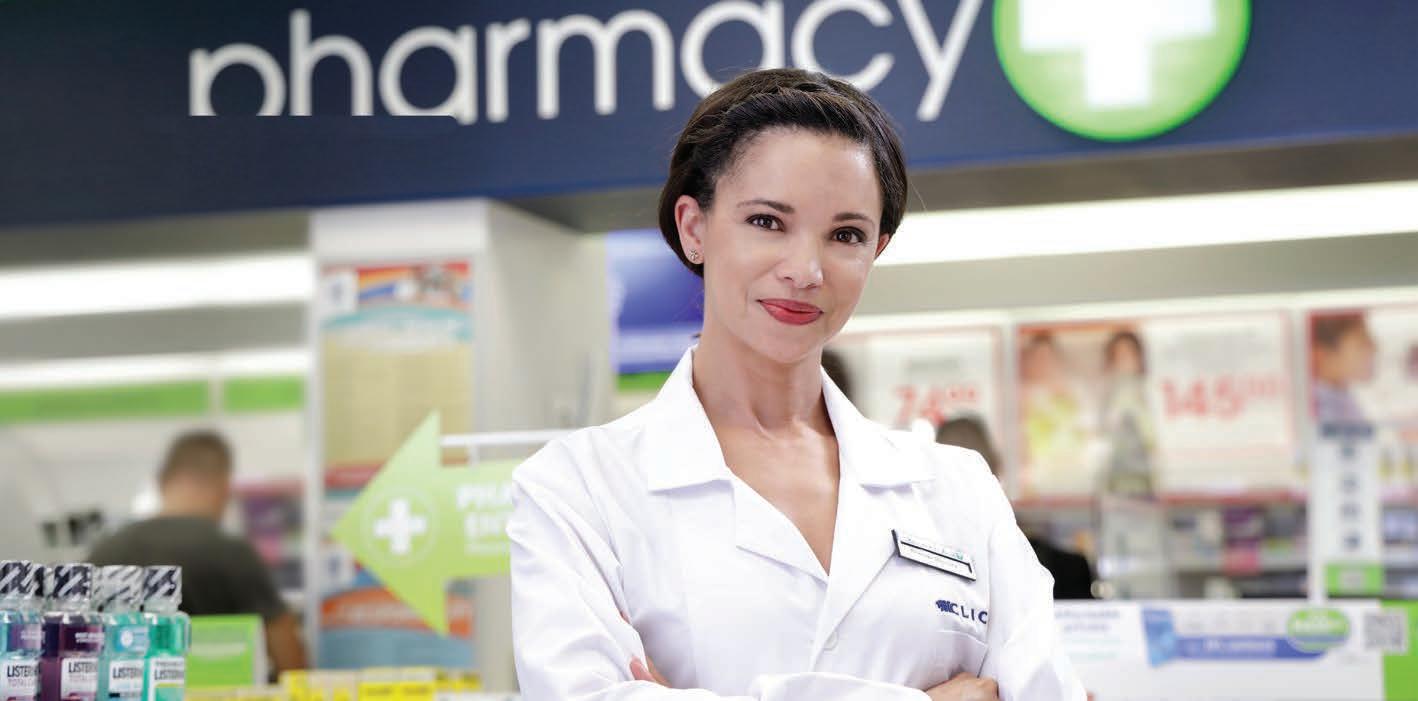



































































































Busy lifestyles mean we don’t have as much time to dedicate to self-care. When you’re not feeling at your best, or you’ve been pushing the limits, can be relied upon for help. Our premium supplements incorporate quality ingredients needed to help support our demanding lifestyles - whilst being safe and compliant with our regulatory requirements.
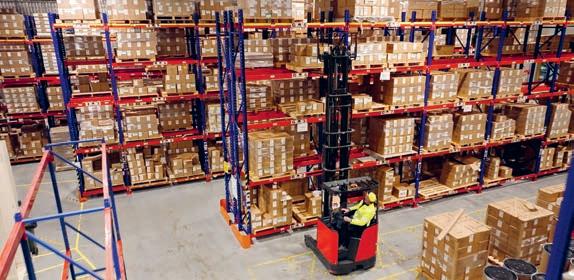
has been a clean-green New Zealand premium supplement brand since 1987 and is one of Australasia’s leading producers. Brand strengths are threefold:
• excellent high-strength formulations;
• using superior ingredient forms; and
• pharma-grade manufacturing compliance to strict local and international standards. Products are formulated by our naturopathic team who strongly believe in the benefits of herbs and nutraceuticals. Herbal medicine has been practised for thousands of years and today’s science enables us to prove much of “old wisdom” as factually relevant. All our hero ingredients are clinically researched, meaning product claims can be substantiated. offers exciting supplement delivery forms – such as sublingual dissolving tablets, tasty chewables, easy-mix powders and direct-to-mouth granular sachets and liquids – making regular supplement taking easier and more enjoyable.
And our production facilities are GMP certified – the international recognition of quality manufacture with highly scrutinised raw ingredients. Our facilities are run along strictly pharmaceutical protocols by pharmacists and their quality assurance teams.
As proof of product quality and success, the brand supplies growth export markets such as Australia, China, Hong Kong, Indonesia, South Africa, South Korea and Vietnam.
In 2001, the brand was launched in South Africa with our head office and distribution located in Cape Town. Health supplement importation and distribution
Our quality management team and responsible pharmacist control our regulatory compliance and product quality.
in South Africa requires approval and licensing by SAHPRA (South African Health Products Regulatory Authority), SAPC (South African Pharmacy Council) and NDOH (National Department of Health)
Our quality management team and responsible pharmacist control our regulatory compliance and product quality. Imported products are monitored during transit to South Africa and for temperature and humidity deviations while in our storage facility, ensuring what you buy in South Africa is the very same quality product manufactured in our New Zealand facility.
All products come with an attached Package Insert (called a PIL – the same as a pharmaceutical drug), outlining safety information, cautions and possible interactions.
In South Africa, we are a BEE compliant company offering high-level, professional service to our nationwide retailers and the public. Company representatives are qualified naturopaths, homeopaths or phytotherapists who understand the formulations and their application to the modern lifestyle. Reps visit retailers and practitioners on training calls, where on many occasions they interact with retail customers, helping them understand more about their own health and product choices. And 23 years on, can be found nationally at health shops, pharmacies, Wellness Warehouse, selected Clicks, Dis-Chem and Medirite+ stores and from Faithful to Nature and other quality online health platforms.
We applaud South Africans who take the day-to-day maintenance of their health into their own hands by supplementing their diet with quality products – leaving visits to the GP only for those serious or repetitive illnesses. But in a world where so many companies take shortcuts, use inferior ingredients and make outrageous claims, it’s important to be able to identify authentic companies and trustworthy products.

If you’re not happy with your purchase – for any reason – just contact us or your retailer and return it for a refund. This is how we stand behind our quality product range.
Let become your supplement range of choice and we’ll walk the path to better health together!

www.goodhealthsa.co.za
www.instagram.com/goodhealthsa/


PUBLISHED BY

Picasso Headline, a proud division of Arena Holdings Pty (Ltd), Hill on Empire, 16 Empire Road (cnr Hillside Road), Parktown, Johannesburg, 2193 PO Box 12500, Mill Street, Cape Town, 8010 www.businessmediamags.co.za
EDITORIAL
Content Manager: Raina Julies rainaj@picasso.co.za
Contributors: Murray Hewlett, Sonal Ratan, Musarrat Parker, Lisa Witepski
Copy Editor: Brenda Bryden
Content Co-ordinator: Natasha Maneveldt
DESIGN
Head of Design: Jayne Macé-Ferguson
Senior Designer: Mfundo Archie Ndzo
Cover Images: wavebreakmediamicro/123rf.com, milkos/123rf.com
SALES
Project Manager: Arnold Cruywagen arnoldc@picasso.co.za | +27 21 469 2508 +27 71 012 5286
Sales: Gavin Payne
PRODUCTION
Production Editor: Shamiela Brenner
Subscriptions and Distribution: Fatima Dramat, fatimad@picasso.co.za
Online Editor: Stacey Visser
Printer: CTP Printers, Cape Town
MANAGEMENT
Management Accountant: Deidre Musha Business Manager: Lodewyk van der Walt General Manager, Magazines: Jocelyne Bayer



Disclaimer:
While every effort has been made to ensure that the information in this publication is sound, it is expressly not designed to diagnose or treat a medical condition or health problem. The information does not constitute medical advice. It is also subject to personal interpretation and may become dated or obsolete. The publisher, editor, authors and their employees or agents, therefore, cannot accept responsibility for the information in this publication or for any errors, omissions or inaccuracies contained therein, whether arising from negligence or otherwise. They are therefore not liable for any direct or indirect effects of the information. Please consult a qualified healthcare practitioner regarding any medical or health issues.
Copyright: No portion of this magazine may be reproduced in any form without written consent of the publisher. The publisher is not responsible for unsolicited material. Healthy Times is published by Picasso Headline. The opinions expressed are not necessarily those of Picasso Headline. All advertisements/advertorials have been paid for and therefore do not carry any endorsement by the publisher.

s the year draws to a close and the festive season begins, life tends to shift into a different rhythm down south. The pace quickens with travel, family gatherings and outdoor adventures, yet it’s also a time when many of us pause to rest, reflect and reset.
This edition of HealthyTimes is intended to support that seasonal balancing act – helping you stay well, informed and energised through the months ahead. We explore why it’s essential to seek professional health advice, how to create body balance by building healthy habits for children and share practical ways to care for your throat health, a topic often overlooked until a tickle turns into something more. Our summer wellness tips offer guidance on staying hydrated, sun-smart and energised during the warmer months, while our travel well guide focuses on simple habits that make journeys smoother and healthier.
Whether you’re spending the season on the move or taking time to recharge, may this issue remind you that health isn’t just about avoiding illness; it’s about living fully, with intention and care.
Raina Julies

8





From packing essentials to managing stress and staying safe, we share simple ways to ensure your holiday is relaxing and hassle-free.
How to spot the difference between tonsil stones and a sore throat – and why that matters for your treatment.
Everyday questions you should ask your pharmacist instead of Dr Google; Pharmacist’s guide to medication safety while breastfeeding.
Building healthy habits – a guide to balanced and fun eating for children.

16

The festive season is associated with rest, reconnection and celebration, but for many it signals sadness and stress. We share expert advice on how to navigate the season with ease.
A supportive, patient-centred process where a trained diabetes nurse educator helps the patient with diabetes to understand their condition and develop the knowledge, skills, and confidence to manage it.
The patient will learn to:
• Monitor and understand blood glucose readings
• Make healthier meal and activity choices
• Cope with the emotional aspects of living with diabetes

Medical funders that pay for DNE services are listed on the right (if a member is registered as a chronic diabetes patient)

























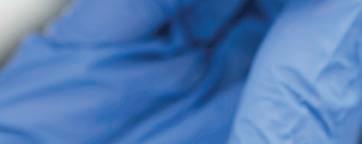








To book your Diabetes Nurse Educator consultation, scan the QR code.






























Get the care you need with ease and convenience. Virtually consult with a qualified and registered doctor at a selected Clicks Clinic near you and get your medication from our pharmacy. Not on medical aid? No problem! Enjoy virtual consultations and renew your chronic prescriptions with the Clicks Virtual Doctor service!



Your solution to a ordable and convenient care
Consult with a qualified and registered doctor at home or at a Clicks Clinic near you, and get your medication in one visit.
Virtual Doctor at a Clicks Clinic

Book a Virtual Doctor appointment and have your consultation at your local Clicks Clinic, guided by our nurses.
Virtual Doctor from the comfort of your home
Book a Virtual Doctor appointment and consult with a doctor on your own device, from anywhere!

For more information about our Virtual Doctor service or to book an appointment, scan the QR code or visit www.clicks.co.za/healthcareservices/virtual-doctor

With over 200 clinics o ering mom and baby services, health checks, primary healthcare services, and more, there is always a Clicks Clinic near you.












Most of us know that we should wear sunscreen daily, but that is easier said than done when some products leave your face feeling greasy. Dr Nomphelo Gantsho from Cape Skin Doctor shares her advice on choosing the right sunscreen for your face.





It is best not to use the same sunscreen for your face as you do for your body. “Many sunscreens are too greasy. Look for a light sunscreen specifically formulated for your face that is noncomedogenic, which means it won’t clog your pores,” says Dr Gantsho.
Clicks SUNprotect Sensitive Face & Neck
Cream SPF 50, 50 ml 14500
Demelan Daily Sunscreen SPF 50, 60 ml 11200
Hada Labo Tokyo Face Sun Cream SPF 50 50 ml 21000









It is also essential to protect your lips from the sun. “Skin cancer is o en found on the lips and sometimes requires surgery, which can leave the lips deformed,” says Sonette Donker from Skin iD Skin Studio. She suggests choosing a lip balm with at least SPF 25.







Clicks SUNprotect Lip Balm SPF 25 2399
Lipsano Lip Care SPF 30 Moisturises Protects Soothes 5 g 10900



Blistex Lip Balm SPF 50+ 13200











If you have sensitive skin or a condition like eczema, Dr Gantsho recommends checking the ingredients before buying sunscreen to make sure it suits your skin type. Not sure where to start? Below are some of our favourite sunscreens for sensitive skin.
Bioderma Photoderm Aquafluide Light SPF 50+ 38000
Eucerin Gel-Cream Dry Touch Sensitive Protect SPF 50+ 200 ml 40000
Vichy Capital Soleil SPF 50 Hydrating Milk Skin Cell Sun Protection 300 ml 55000
Vitamin C




With ingredients such as hyaluronic acid, retinol, and niacinamide topping skincare lists, one ingredient that experts agree should be part of your daily routine is vitamin C. Known for its antioxidant benefits, vitamin C helps protect your skin from pollutants, sun damage, and premature ageing.



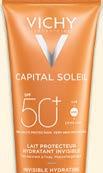












Scan the QR code to read more about the skin benefits of vitamin C.







Whether you’re heading to the coast, the bush or across borders, a little preparation can make all the difference to your peace of mind. From packing essentials to managing stress and staying safe, Lisa Witepski shares simple ways to travel well this festive season
reparation is the key to a truly carefree holiday. Plan, pack smart, and remember that staying well when you’re on the move allows you to arrive relaxed, refreshed and ready to make the most of your break.
Healthy eating routines can easily be disrupted by travel plans, notes dietitian Pippa Mullins. “One simple solution is to eat before you leave,” she says. This reduces the temptation to fill up on muffins and crisps at airport kiosks or garage shops.
Mullins cautions against slipping into the holiday mindset that sees many of us reaching for padkos before sunrise or swapping black coffee for sugary lattes. If you view holidays as a time to spoil yourself, try to skip snacks between meals instead. This allows you to enjoy a more indulgent dish at breakfast, lunch or dinner without going overboard.
Above all, she adds, keep moving. “Don’t stop exercising just because you’re out of your daily routine. A morning walk or run will help you stay energised and balanced.”
“Don’t stop exercising just because you’re out of your daily routine. A morning walk or run will help you stay energised and balanced.” – Pippa
Mullins
It’s ironic that the long-awaited holiday can sometimes be a major source of stress. Christine Phillips, health coach at Health Yourself, says that’s completely understandable. “Busy roads, long journeys or restless children can test anyone’s patience,” she says.

Planning is key. Write lists and tick off each item as you go – this helps prevent late-night overthinking. “Allow extra time in your travel schedule,” Phillips advises. “Something almost always goes wrong before departure, so build in a buffer to avoid panic.” Equally important is staying calm when plans change. Take a deep breath and accept that not everything is within your control.
A few small tweaks can also make travel more comfortable: swap jeans for stretch pants, download your favourite playlists and bring a book to pass the time.
Before you leave, decide what type of holiday you want – whether it’s to relax, reconnect or explore – and stick to that intention. “Once you’re clear on your goals, it’s easier to say no to things that don’t serve them,” says Phillips. Check in with yourself daily to ensure your own needs are being met.

She adds that while routines naturally shift during holidays, maintaining a few healthy habits, such as starting the day with movement, helps you feel more grounded. “Use this time for a digital detox,” she says. “Put your phone down and focus on real conversations.”


Sleep is one of the first casualties of travel. Strange beds, different time zones and late nights can all take their toll. Phillips suggests stopping alcohol at least two hours before bedtime and drinking water throughout the day to stay hydrated.
“Keep your room dark and well-ventilated, and avoid screens two hours before bed,” she says. “Turn off notifications and alerts for a truly restful night.”
For those who struggle to fall asleep, supplements, such as magnesium glycinate or ashwagandha, may help.

Clicks is a great go-to resource for essential travel gadgets:
•The On The Go 5 Piece Travel Set: includes travel-sized containers for toiletries, perfect for airport security compliance.
•Portable Luggage Scale: avoid unexpected baggage fees by weighing your luggage before heading to the airport.
•3 in 1 Travel Pillow: provides support for neck, lumbar and head, ensuring comfort during long journeys.
•Stainless Steel Double Wall Travel Mug, 450ml: keeps your beverages hot or cold for extended periods, reducing the need for disposable cups.
•Sorbet Hanging Bag: organises your cosmetics and toiletries, making them easily accessible during travel.
•Cosmetic Bag Leopard Print: stylish and functional, this bag keeps your personal items neatly packed.
•Superfly Power Bank 20000mAh LCD Display: ensures your devices stay charged throughout your travels.
•Volkano SoundSweeper Series Active Noise Cancelling Headphones: enhance your travel experience by blocking out ambient noise.
• Gizzu Universal Travel Adapter: compatible with various plug types, ensuring your devices can be charged worldwide.
• Digital Compact Luggage Travel Scale: helps you avoid overweight luggage charges by accurately measuring your bags.
A stress-free journey also depends on safe travel. Dewald Ranft, chairperson of MIWA, advises checking that your insurance and licence disc are up to date before heading out.
Do a full vehicle inspection to ensure the radiator and cooling systems, battery, windscreen and wipers, electronics, lights, indicators and brakes are all in working order.
Double-check your safety equipment, such as a tyre repair kit and reflective triangle, are in place and ensure your tyres are inflated to the recommended pressure.

Pack smart, travel safe and stay well with these essentials:
• First-aid must-haves: for travelling tots, preparation begins long before you hit the road. Lizeth Kruger, Dis-Chem Baby City Clinic executive, recommends putting together a well-stocked first-aid kit that includes a digital thermometer, plasters, antiseptic cream, pain relief (like paracetamol), fever cooling gel pads for kids, insect repellent, hand sanitiser, wipes, scissors, burn dressings and tweezers.

•Stay hydrated: carry a refillable water bottle and sip regularly, especially on long drives or flights.
•Healthy snacks: nuts, fruit, yoghurt or homemade sandwiches beat sugary or fried foods at rest stops.
•Manage stress: write a to-do list, allow buffer time for delays and practise deep breathing or mindfulness if you feel anxious.
•Rest easy: avoid alcohol close to bedtime, switch off screens early and keep your sleeping space dark and cool.
•Safety first: check tyre pressure, brakes, lights and fluids before you go. Ensure your insurance and licence disc are up to date and your safety kit is packed.





How to spot the difference between tonsil stones and a sore throat – and why that matters for your treatment. By Murray Hewlett
, CEO of Affinity Health
Tonsil stones (tonsilloliths) are small, hard lumps that form when food particles, dead cells, mucus and bacteria build up in the tonsil crypts and harden.
They’re usually harmless but can cause bad breath, throat irritation and a sensation of something stuck in the throat. People with recurring tonsillitis, large tonsils or poor oral hygiene are more prone to them.
A sore throat is typically caused by viral or bacterial infections, allergies or dry air. Symptoms often include pain, redness, swelling, fever, body aches and difficulty swallowing. Unlike tonsil stones, sore throats usually appear suddenly and are often accompanied by other signs of illness.

common with tonsil stones due to trapped bacteria, tonsil stones look like small, hard white or yellow lumps. Strep throat shows larger, pus-filled white patches. tonsil stones usually cause mild discomfort, while sore throats can be significantly more painful. fever, fatigue and swollen lymph nodes often accompany sore throats, not tonsil stones. sore throats develop suddenly, tonsil stones




Seek medical help if you have: Persistent or severe throat pain. Swollen lymph nodes. Pus-like white patches. Trouble swallowing or breathing. A doctor can confirm the cause and recommend the right treatment.












Tonsil stones: gargle with saltwater, maintain good oral hygiene or consult a dentist/ENT for removal. Severe or chronic cases may require tonsillectomy.
Sore throats: rest, stay hydrated, use pain relievers and gargle with saltwater. If bacterial, antibiotics may be needed.
Distinguishing between tonsil stones and a sore throat can be tricky, especially when symptoms overlap. However, understanding the key differences can help you respond appropriately, whether that means improving your oral hygiene, gargling with saltwater or seeking medical attention.
Simple daily steps to keep your throat and tonsils in better condition:
• Stay well-hydrated: drinking plenty of water keeps throat tissue moist and helps prevent irritation, dryness and infection.
Source: Charleston ENT & Allergy
• Gargle with warm salt water: Mix approximately ½ teaspoon of salt in 250–300 ml warm water, gargle for a few seconds and spit out. This can reduce inflammation in the throat and tonsils.
Source: Healthline
• Maintain good oral hygiene: brushing twice daily, flossing and using mouthwash reduces bacterial build-up around your tonsils and lowers risk of stones or infections.
Source: Charleston ENT & Allergy
• Avoid throat irritants: stay away from cigarette smoke, strong cleaning fumes, dry air and other irritants that can inflame your tonsils or throat tissue. Source: Mayo Clinic Health System
• Use a humidifier or steam: dry air can worsen throat discomfort – running a cool-mist humidifier or inhaling steam in the shower can ease symptoms. Source: Medical News Today
• Practise voice care: if you use your voice a lot (singing, speaking, customer service), rest your voice when feeling throat strain and avoid shouting or coughing too much. Source: Charleston ENT & Allergy
• Eat and drink wisely: opt for warm teas or broths, avoid overly hard or sharp foods when your throat is irritated and opt for soft, soothing options to calm the area. Source: HealthPartners
• Keep monitoring recurring issue: if you have throat discomfort, white spots, tonsil stones or recurrent infections, consult a healthcare professional to rule out underlying causes.
Source: my.clevelandclinic.org.












































The Pharmacy Institute shares 10 everyday questions your pharmacist will answer more accurately than Dr Google (or ChatGPT)


1. Brand-name versus generic medicines.
Pharmacists can explain if a generic works the same as a brand, the differences between biosimilars, compounded or bio-identical medicines and when it’s safe to switch – often saving you money without compromising quality. Not all options are interchangeable; always check before switching.
2. Medicine interactions.
Mixing medicines, supplements or herbal remedies can be harmful or reduce effectiveness. Your pharmacist spots risks instantly and advises what’s safe to take together.
3. How to take your medicine.
Timing and food affect effectiveness. Some tablets need an empty stomach, others work best with food. Pharmacists guide you on proper timing and dosage to maximise benefits and minimise side effects.
4. Lifestyle changes to support treatment.
Medicine is only part of the solution. Pharmacists can recommend sleep, stress management, diet or exercise adjustments tailored to your condition – helping conditions like hypertension or diabetes.
5. Managing side effects.
Not all side effects are dangerous. Pharmacists can explain which are normal, which need dosage changes and which require urgent attention – avoiding unnecessary panic or online misinformation.
6. Safe medication for children.
Children need different dosages and treatments than adults.
Pharmacists advise on safe remedies, lifestyle adjustments and red flags that require a doctor’s attention.
7. Do you need antibiotics?
Pharmacists explain when they’re appropriate, why overuse is risky and how to take them safely if prescribed. They also recommend supportive measures to protect your gut and overall health.
8. Vaccines.
Pharmacists provide up-to-date advice on flu shots, COVID boosters, travel vaccines and other preventative measures based on the latest evidence.
9. Supplements.
Pharmacists help you choose safe, evidence-based options for your needs and advise on interactions, especially for children, older adults, pregnant or breastfeeding individuals or those with chronic conditions.
10. When to see a doctor.
Pharmacists can identify red flags and guide you to your GP or specialist for timely evaluation and medical intervention.








What every nursing mom should know. By pharmacist
Musarrat Parker of Medipost Pharmacy
breastmilk offers the ideal mix of nutrients and antibodies to protect babies and support healthy growth. Nursing mothers should consult a healthcare professional before taking any medication, as some drugs — including opioids, antihistamines or certain antidepressants — can affect the baby, reduce milk supply or alter the taste of breastmilk, especially in premature infants.
1. Always inform your healthcare provider that you are breastfeeding before taking any medicine.
2. Avoid self-medicating, including herbal remedies and supplements. 3. Use trusted resources, such as e-lactancia.org, to verify compatibility. Safe practices include timing doses immediately after breastfeeding to minimise infant exposure and opting for short-acting medications that clear the mother’s system faster. Mothers should always monitor their babies for changes in sleep, feeding or behaviour and consult their paediatrician if concerns arise.
NUTRITION WHILE BREASTFEEDING
Breastfeeding increases maternal nutrient requirements. I suggest supplements tailored to individual needs: vitamin D, B12 (especially for vegetarian or vegan mothers), folic acid, iron, calcium, magnesium and omega-3 (DHA). Prenatal vitamins are often continued after birth to ensure broad nutrient coverage.


PRACTICAL SUPPORT FOR NURSING MOTHERS
Breastfeeding can be physically and emotionally demanding. I advise rotating night-time duties with a partner, creating a calming feeding space, using proper positioning and nursing pillows and staying hydrated.
Breastfeeding offers extraordinary benefits for both mother and baby. With careful medication management and practical support, mothers can protect their baby’s health while maintaining their own wellbeing.






Dr Tumi Mahlangu, dental advisor at DENIS (an AfroCentric Group subsidiary), explains how oral health plays a big role in overall wellbeing
When most people think about a visit to the dentist, it’s usually in one of two situations: either when something hurts or when they’re hoping to x a smile. Whether it’s a chipped tooth or teeth whitening, dental care is often seen through a cosmetic or emergency lens. However, what many don’t realise is that oral health plays a much bigger role in our overall wellbeing. When it’s neglected, the consequences can go far beyond cavities and crooked teeth.
In South Africa, oral health is facing a growing crisis that many aren’t even aware of. Several factors contribute to this, from poverty and unequal access to healthcare, poor diets and a general lack of awareness about dental hygiene. Add to this the limitations of the current public healthcare system and you begin to understand why millions of South Africans are suffering in silence, often only seeking help when it’s already too late.
As part of National Oral Health Month, AfroCentric is highlighting a powerful solution to this issue: teledentistry. This innovation uses everyday technology – think smartphones, laptops and the internet –to make dental care more accessible, especially for people in remote or underserved areas. By offering education and virtual consultations,

teledentistry can help prevent oral health problems before they start and connect people with care they might not otherwise receive.
The need for this kind of intervention is clear. While public health services in South Africa cater to over three million people annually, they often focus on treating pain and infections rather than offering long-term solutions or preventive care. And although medical aid schemes spent nearly R10-billion on dental care in recent years, only 16 per cent of the population can afford to access these private services.
What’s even more worrying is the state of children’s dental health. Half of all South African children suffer from untreated tooth decay, with rates reaching up to 84 per cent in some provinces. And it doesn’t stop there! More than a quarter of people over the age of ve have cavities, while many adults face severe gum disease or complete tooth loss. Oral cancer and birth defects like cleft lip and palate also remain serious concerns.
However, oral health isn’t just about the mouth. There’s a direct link between dental issues and other medical conditions. Gum disease, for example, can worsen diabetes, contribute to heart disease and increase the risk of complications during pregnancy. People living with HIV/AIDS often show early signs of illness through oral infections. Even lifestyle choices, such as smoking and drinking, which are common across many age groups, are known causes of oral cancers and facial injuries.
The reality is that the current public system is stretched thin. While dental clinics are meant to offer basic services, such as check-ups, cleanings and health promotion, in practice, most focus on treating urgent problems. This leaves little time or resources for prevention or education, two of the most important tools in ghting oral disease.

Dr Tumi Mahlangu is a dental advisor at DENIS with extensive experience across clinical, academic and administrative aspects of healthcare. She holds a Bachelor of Dentistry degree and postgraduate diplomas in Interceptive Orthodontics and Forensic Dentistry (cum laude). She also completed the Management Development Programme at Stellenbosch Business School, earning the Director’s Award for Top Student, and is currently pursuing an MBA in Strategy at Edinburgh Business School. Her career spans public service, private practice, academia and the medical aid sector, giving her a broad understanding of clinical standards and healthcare systems. Passionate about innovation and technology in oral health, Dr Mahlangu’s research focuses on digital transformation in dentistry, including publications on dental record-keeping technology and the applicability of teledentistry in Africa, the latter earning a 2025 BHF Titanium Award nomination for Best Paper.
That’s where teledentistry comes in. Using technology, dental professionals can provide advice, check-ups and follow-up care without needing patients to travel long distances. Simple things like video calls, text message reminders and digital education materials can make a huge difference in how people care for their teeth. It’s not just about seeing a dentist; it’s about learning how to prevent issues in the rst place.
This approach is already being used in some parts of the country, especially through mobile dental units and school-based health programmes. With the right support, these efforts can be scaled up to reach more communities. Training healthcare workers on how to use teledentistry tools is a key step, as is ensuring the necessary infrastructure, such as internet access and data privacy protections, is in place.
Of course, there are challenges. Setting up the technology requires funding. There are legal and ethical issues to consider, especially when it comes to patient data. Some areas may not

yet have reliable internet connectivity. However, despite these obstacles, teledentistry offers a low-cost and practical way to start making oral healthcare more accessible.
Even at its most basic level, teledentistry can be a game-changer. Sending out video instructions for brushing techniques, sharing educational content via WhatsApp or social media, or using interactive apps in schools can all help build better oral health habits, especially among children. Over time, these small steps could prevent a lifetime of dental problems.
At the heart of it, teledentistry is about breaking down barriers, making sure that no matter where someone lives, they can access the knowledge and support needed to keep their mouth healthy. It’s an investment in health equity and a move towards a future where dentistry is seen not just as a luxury or emergency service, but also as a vital part of staying well.
DENIS has been a leader in dental managed-care services since 1996. Our extensive experience in dental risk management, combined with cutting-edge technology, enables us to offer world-class services tailored to the South African market. As a subsidiary of the AfroCentric Group, DENIS contributes to the group’s diverse healthcare portfolio by providing focused dental managed-care solutions to its medical scheme clients. Through this partnership, DENIS complements Medscheme, the largest health administration and managed-care services provider in the group, managing over four million lives.

Establishing healthy eating habits in children is both a challenge and an opportunity for parents.
By Sonal Ratan , dietitian at FUTURELIFE ®
good nutrition plays a central role in supporting your child’s growth, energy and concentration, but getting children to eat healthily can sometimes feel like a major challenge. That said, it’s also an opportunity to build positive habits that will last them a lifetime. Making informed food choices is essential in establishing healthy patterns. A good place to start is by reading the labels on all food packaging to ensure you’re making nutritionally sound decisions for your child. Parents are often surprised when they see how much sugar or how little fibre or protein is in some products marketed to children. Awareness is the first step toward making more mindful selections.

Bright, rainbow plates and playful shapes make healthy foods more appealing. Get kids involved in creating fresh fruit and vegetable shapes, assisting in assembling fruit kebabs or putting together the
Breakfast is an easy start. If your children enjoy cereals, try ones that have more fibre and less sugar but still taste great. Cereals that contain whole grain oat clusters and multigrain pops together with smart food™ and probiotics is a great start. If they prefer toast, try high-fibre brown bread and pair it with a protein like a scrambled egg.




Snacks are another opportunity to add more fibre and protein to their diet. Options, such as yoghurt with fresh fruit and a sprinkle of homemade popcorn, are great for keeping kids satisfied between meals. Staying well-hydrated is also essential, so encourage them to drink plenty of water throughout the day and make it easy for them to reach. One simple way to do this is by personalising a reusable water bottle with their favourite stickers – this small touch can serve as a fun reminder to
Small changes at lunch and dinner can also make a difference. Choosing wholewheat pasta, brown rice or a baked potato with the skin

adds fibre to your child’s diet. Lean protein helps round out meals, keeping them balanced and satisfying. Don’t forget the vegetables. Try blending vegetables and mixing them into soups, stews and pasta sauces – it’s a simple way to add extra nutrients without fuss. Alternatively, cut them into fun shapes for lunch or a snack and serve with a dip like hummus or cottage cheese to make them more appealing.
The best approach is to plan these into your household’s weekly routine rather than being spontaneous. Here are a few tips to help guide you:
1. Make it a shared experience.
Sit down together, talk and enjoy the treat mindfully. Don’t eat in front of screens or on the go.
2. Try not to use treats as routine rewards.
This helps children not to associate takeaways or treats with entitlement or emotional comfort.
3. Balance the day.
If dinner is a takeaway, keep breakfast and lunch nutrient-rich. 4. Portion control.
Split big meals and share sides. Dish the food onto a plate when possible, rather than kids eating straight from the packet.
5. Keep it fun and positive.
Avoid expressing guilt or negative comments about treats. Be positive and enjoy it. Children pick up on parental attitudes, and you want them to have a healthy relationship with all types of food. Balanced nutrition isn’t about perfection. Healthy eating should be practical, enjoyable and balanced. Remember, you’re not just feeding your child today, you’re teaching them to care for their bodies long-term. Any small change now lays the foundation – some days may be better than others, and that’s okay. The goal is to gradually make mindful eating a natural part of their daily life so it is second nature when they get older.
Balanced nutrition isn’t about perfection. Healthy eating should be practical, enjoyable and balanced.
The festive season should be a time to unwind, reconnect and celebrate. However, for many, it brings as much pressure as it does joy. Lisa Witepski finds out how to avoid the stress







psychologist Agnes Jooste notes that the festive season amplifies both joy and strain. “Whatever your circumstances, try to meet yourself and others with compassion. Simplicity, rest and connection are often the most healing gifts you can give,” she advises.
This is good advice in the face of family tensions, which often threaten to disrupt carefully planned get-togethers. Jooste says one way to avoid these tensions is to set boundaries clearly, but compassionately. Allow yourself a time-out if it will help you regroup, for example, go for a walk.
“Practise love and curiosity – if you feel an instant reaction, ask yourself where it may come from. Try to remember that everyone is flawed. Remind yourself that it is sometimes better to let things go than to exacerbate tensions by having to be right. And, when those tensions mount and you start to feel panicky, try a simple mindfulness technique.”
Jooste suggests identifying five things you can see, four things you can hear, three things you can feel, two things you can smell and one thing you can touch. Alternatively, try box breathing: in for a count of four, hold your breath for a count of four, then out for a count of four, counting to four again before you start the cycle.
Finances are a significant cause of stress during the season. Limit spending by planning during the year, save to have money available for presents, and ensure you stick to your budget. Perusing online sites can be helpful because you’re less likely to be tempted to make impulsive purchases, but avoid “comparison spending” driven by social pressure or social media. “Focus on shared experiences or homemade presents instead of costly gifts, and remember that the true spirit of the season is connection, not consumption,” Jooste says.
“Simplicity, rest and connection are often the most healing gifts you can give.” – Agnes Jooste
She adds that, for many people, far from being a time of joy, the season can bring loneliness – especially for those dealing with loss. Don’t be tempted to cover up your feelings, she urges. Showing vulnerability is not a weakness; it is a healthy part of life. “Allow yourself to be human – both the shadows and the light belong,” she says. This also means allowing your children to see your sadness and letting them express their own. Practical steps that may help include remembering your loved ones: talk about them (or even to them) and recreate their favourite festive season activities. Plan ahead: set up a support structure, schedule calls and make plans with friends and family so you have something to look forward to, or consider volunteering at a local shelter. If scrolling social media makes you feel worse, cut down on the habit.

While it’s crucial to attend to your mental health at this time, your physical health may also take a toll, with regular overindulgence leading to digestive discomfort.
to make healthy choices is likely to be tested by the fact that, most often, your options are limited to the finger foods that are easy to produce in large quantities, especially at cocktail parties. To avoid mindlessly munching on one sausage roll after another, fill up on a snack beforehand. “It’s also a good idea to create a mental image of a dinner plate while you eat, so you have an idea of just how much food you’ve taken,” she says.
Where possible, choose proteins (like kebabs or drumsticks) and crudités – and watch how much you drink. Alcoholic drinks not only increase your calorie intake significantly, but also stimulate the release of insulin, making you hungry, and promote fat storage while inhibiting your body’s ability to break down fat. Try to have a glass of water in between drinks.
With a little planning, mindfulness and compassion, it’s possible to enjoy the season’s sparkle without the stress.





An ever-growing body of research supports art and creativity as a form of medical treatment that doctors can prescribe to alleviate physical and mental health conditions, ultimately adding years to our lives, writes Medihelp
Most of us have created art in some form at some point in our lives. Whether it was clumsily strumming a guitar, slapping paint on a canvas or telling sweeping stories of fantastical adventures, our childhood creativity felt limitless. Unfortunately, many of us have abandoned our artistic endeavours in favour of the responsibilities of adulthood. However, what if embracing our creative side or simply exposing ourselves to art could significantly benefit our health and even extend our lives?
Evidence from a study conducted for NASA by George Land and Beth Jarman shows that we have an enhanced sense of creativity as children, which declines significantly as we age. The study verified that 98 per cent of youngsters are highly creative, while a mere 2 per cent of adults retain their creativity. Art as an expression of our creativity has been ever-present in the history of humankind. We see our creative heritage demonstrated in early human cave paintings. Artistic activities can influence our biology by rewiring our brains and triggering the release of neurochemicals, hormones and endorphins. Scientists have abandoned the outdated idea that art is a luxury reserved for the privileged few. It is, in fact, linked to our very survival as a species.
Our dependence on art is more vital to our wellness than we may realise. Engaging in art practices can physically help us live longer. Exposing ourselves to human creativity, whether, for example, listening to a soulful piece of music or viewing a masterpiece on canvas, can also reap similar benefits.
According to an article on bmj.com, art has the remarkable potential to increase life expectancy due to its ability to protect us from age-related illnesses, including cardiovascular disease, stroke and dementia.
Creating or enjoying art can benefit our health in several ways, according to an article in Psychology Today. These powerful effects position art right up there with the other contenders for good health, including exercise, nutrition and sleep, says author and neuroaesthetics expert Susan Magsamen.
Various physical conditions have been treated and managed effectively with creative activities or exposure to art:
• Obesity: art therapy has been shown to boost the self-esteem of obese individuals.
• Heart disease: listening to relaxing music has proven effective in reducing anxiety and, in turn, alleviating symptoms of heart disease.
• Chronic pain: playing a musical instrument can relieve pain and improve mood.
• Parkinson’s disease: participating in frequent dance classes has been shown to slow down the motor symptoms of Parkinson’s disease.
“Artistic expression can transport a world-beaten adult to a place of temporary solace.” – Dr Tarisha Naidu

• Blood pressure: viewing artworks has been proven to relieve stress and, as a result, lower blood pressure.
Art also has the power to treat various mental health concerns, including:
• Depression.
• Anxiety.
• Post-traumatic stress disorder (PTSD).
• Dementia.
• Schizophrenia.
• Alzheimer’s disease.
Dr Tarisha Naidu, a Durban-based clinical psychologist and researcher, expresses how exposing patients in public hospitals to art profoundly impacts their mental wellbeing: “Art in a public mental health space is humanising ... An exotic flower, rolling waves or a cheeky giraffe, where least expected, may alleviate a child’s disturbing experience. Artistic expression can transport a world-beaten adult to a place of temporary solace.”
The pursuit of artistic creation should not be limited to creatives’ strokes of genius or the innocent exploits of our little ones. It’s time we embrace this innate human passion and pick up that paintbrush, connect with our inner dancers (albeit in the living room) or listen to that tune we’ve been humming. Whether you engage in art as a spectator or creator, it might just be the key to staying healthy and adding a few more years to your life while you’re at it.

www.medihelp.co.za

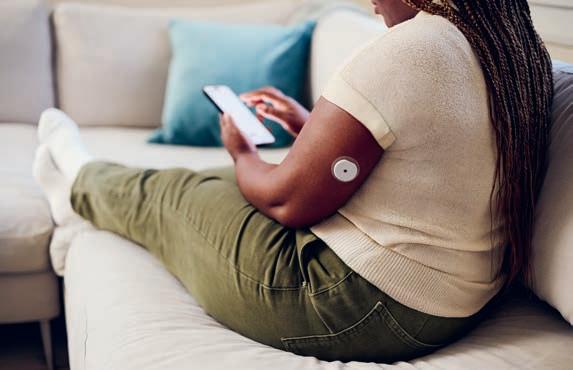
Knowing your glucose (blood sugar) levels is an essential part of diabetes management. These values don’t just inform you about the effect of your food choices and physical activities; they also guide your decisions about your medication and diet.
Glucose values can be obtained in two main ways:
1.Self-monitoring of blood glucose (SMBG): using a blood glucose meter to measure glucose concentration of capillary blood, typically drawn by a fingerstick.
2.Continuous glucose monitoring (CGM): using a sensor to monitor glucose values constantly.
While both methods are useful, understanding their major differences is key to optimising your diabetes management.
SMBG: THE RELIABLE SNAPSHOT OF YOUR BLOOD GLUCOSE
When you use a SMBG meter, you get a value that reflects your blood glucose level at the exact moment of the test. This is often done several times a day, typically before meals and before bedtime, depending on your medication and the type of diabetes you have.
SMBG’s unique value:
•A direct blood measurement: SMBG measures glucose in the capillary blood drawn by a finger prick. Since glucose concentrations in the blood and the fluid between cells (interstitial fluid) are balanced, SMBG provides equally useful values for diabetes management.
•A crucial spot-check: SMBG provides a reliable spot measurement that is often necessary in certain situations. While CGM can give you a full picture over time, the SMBG value is a direct snapshot.
SMBG provides you with essential spot-checks in a direct blood measurement, while CGM gives you the benefit of continuous data and predictive trends.
In contrast to the snapshot of SMBG, CGM provides a continuous stream of glucose values, measuring your levels every 1–5 minutes in the interstitial fluid below your skin.
CGM’s unique value
•The full glucose curve: CGM combines these measurements into a glucose curve, giving you a full picture of your glucose levels over the time you wear the sensor. You can see what happened to your glucose level before, and get an estimate of its future development.
•Trend identification and warnings: CGM is excellent for identifying trends and providing warnings when your glucose levels are trending too high or too low. This allows you to take corrective action before a serious problem occurs.
•Pattern detection: CGM helps you detect recurring, unwanted blood glucose patterns, like phases of too high or too low levels, thus providing the necessary information to adapt and improve your management.
Both SMBG and CGM are powerful tools. They provide the essential information you need to guide your medication and diet decisions. SMBG provides you with essential spot-checks in a direct blood measurement, while CGM gives you the benefit of continuous data and predictive trends. In times of rapid changes in glucose, however, there might be a transient difference between the two values. Talk to your healthcare provider about which monitoring approach – or a combination of both – will best empower you to manage your diabetes with confidence.
Visit the Accu-Chek Africa website to learn more about SMBG and CGM.
Disclaimer: consult with your healthcare professional to determine the most appropriate glucose monitoring method for your diabetes management plan.
Information provided is void of any representation and warranty as to the reliability, accuracy, usefulness, adequacy, or suitability of the information provided, and is not a substitute for professional medical expertise or treatment for medical conditions, applications of medication. For personalised medical advice, consult an appropriate medical professional for queries regarding any medical conditions.
ACCU-CHEK, ACCU-CHEK SMARTGUIDE, and ACCU-CHEK SMARTGUIDE PREDICT are trademarks of Roche. All other product names and trademarks are the property of their respective owners. | © 2025 Roche Diabetes Care | Roche Diabetes Care South Africa (Pty) Ltd. | Hertford Office Park, Building E | No 90 Bekker Road | Midrand, 1686, South Africa | ZA-667

www.accu-checkafrica.com www.facebook.com/RocheDiabetesCareSSA

